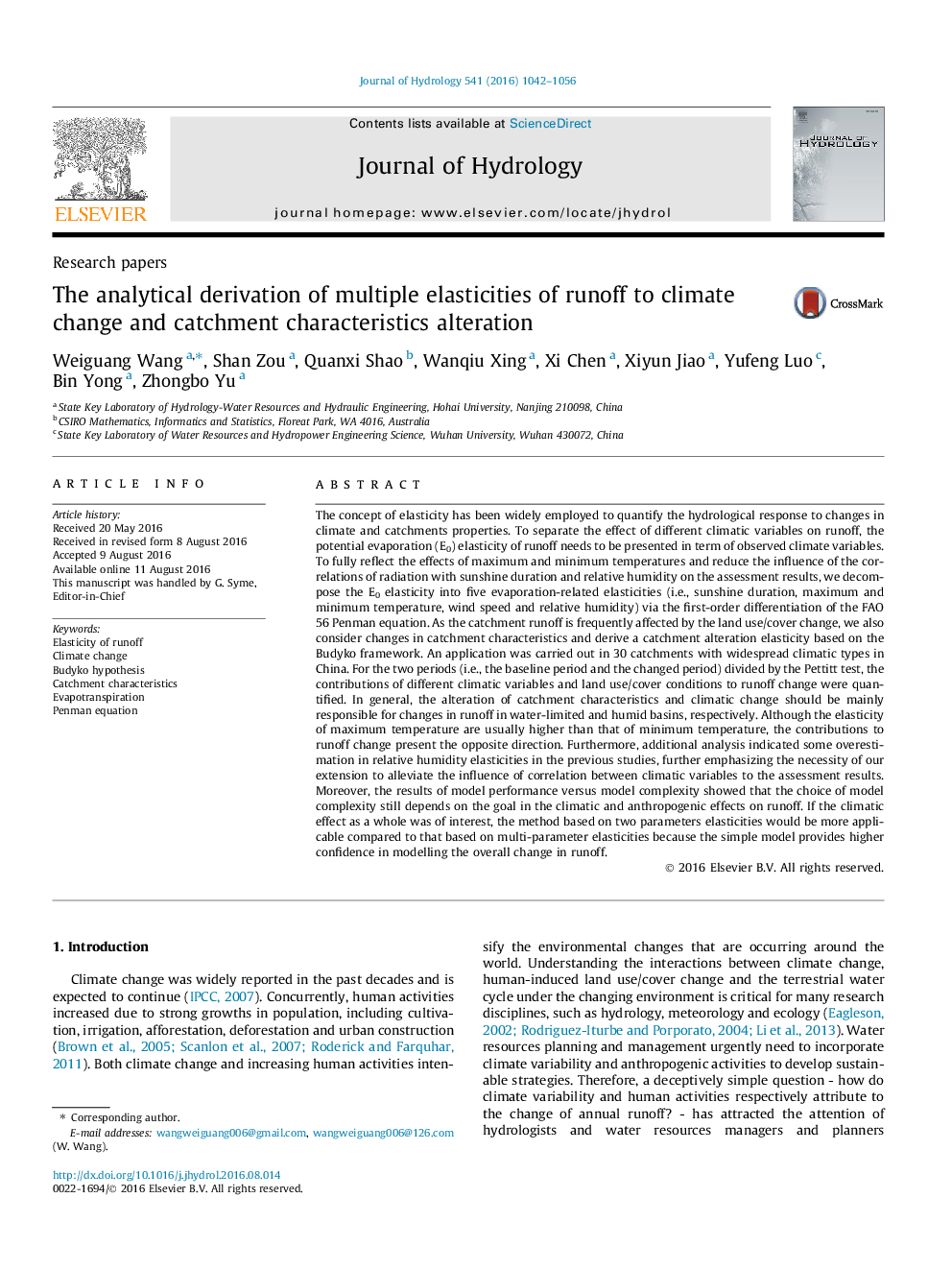| Article ID | Journal | Published Year | Pages | File Type |
|---|---|---|---|---|
| 6409447 | Journal of Hydrology | 2016 | 15 Pages |
â¢Developed analytical derivation of multiple elasticities based on Budyko and penman framework.â¢Quantified the contributions of climatic conditions and catchment characteristics to runoff change.â¢Preliminarily assessed the applicability of model extension.
The concept of elasticity has been widely employed to quantify the hydrological response to changes in climate and catchments properties. To separate the effect of different climatic variables on runoff, the potential evaporation (E0) elasticity of runoff needs to be presented in term of observed climate variables. To fully reflect the effects of maximum and minimum temperatures and reduce the influence of the correlations of radiation with sunshine duration and relative humidity on the assessment results, we decompose the E0 elasticity into five evaporation-related elasticities (i.e., sunshine duration, maximum and minimum temperature, wind speed and relative humidity) via the first-order differentiation of the FAO 56 Penman equation. As the catchment runoff is frequently affected by the land use/cover change, we also consider changes in catchment characteristics and derive a catchment alteration elasticity based on the Budyko framework. An application was carried out in 30 catchments with widespread climatic types in China. For the two periods (i.e., the baseline period and the changed period) divided by the Pettitt test, the contributions of different climatic variables and land use/cover conditions to runoff change were quantified. In general, the alteration of catchment characteristics and climatic change should be mainly responsible for changes in runoff in water-limited and humid basins, respectively. Although the elasticity of maximum temperature are usually higher than that of minimum temperature, the contributions to runoff change present the opposite direction. Furthermore, additional analysis indicated some overestimation in relative humidity elasticities in the previous studies, further emphasizing the necessity of our extension to alleviate the influence of correlation between climatic variables to the assessment results. Moreover, the results of model performance versus model complexity showed that the choice of model complexity still depends on the goal in the climatic and anthropogenic effects on runoff. If the climatic effect as a whole was of interest, the method based on two parameters elasticities would be more applicable compared to that based on multi-parameter elasticities because the simple model provides higher confidence in modelling the overall change in runoff.
